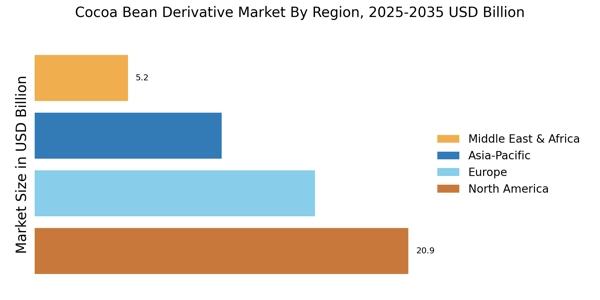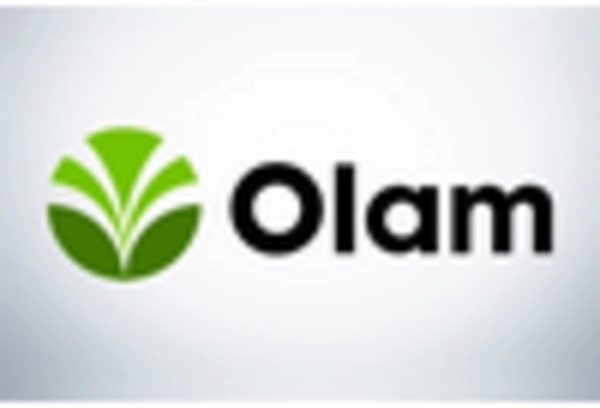Health and Wellness Trends
The growing emphasis on health and wellness among consumers is influencing the Cocoa Bean Derivative Market. Cocoa derivatives, particularly dark chocolate, are increasingly recognized for their health benefits, including antioxidant properties and potential cardiovascular advantages. As consumers become more health-conscious, the demand for cocoa products that align with these values is likely to rise. Reports indicate that the market for health-oriented cocoa products is expanding, with a projected growth rate of around 5% annually. This trend encourages manufacturers to innovate and develop healthier cocoa derivatives, thereby enhancing the overall appeal of the Cocoa Bean Derivative Market.
Sustainability Initiatives
Sustainability initiatives are becoming a crucial driver in the Cocoa Bean Derivative Market. As environmental concerns gain prominence, consumers are increasingly seeking products that are ethically sourced and produced. The cocoa industry is responding by implementing sustainable farming practices and certifications, such as Fair Trade and Rainforest Alliance. These initiatives not only address consumer demand for responsible sourcing but also enhance the marketability of cocoa derivatives. In 2025, it is anticipated that sustainably sourced cocoa products will account for a significant portion of the market, reflecting a shift towards environmentally conscious consumption patterns within the Cocoa Bean Derivative Market.
Rising Demand for Chocolate Products
The increasing The Cocoa Bean Derivative Industry. As consumer preferences shift towards premium and artisanal chocolates, manufacturers are compelled to source high-quality cocoa derivatives. In 2025, the chocolate market is projected to reach a value of approximately 150 billion USD, indicating a robust growth trajectory. This surge in demand is likely to stimulate the production of cocoa derivatives, such as cocoa butter and cocoa powder, which are essential ingredients in chocolate manufacturing. Consequently, the Cocoa Bean Derivative Market is expected to experience significant expansion as producers strive to meet the evolving tastes and preferences of consumers.
Technological Innovations in Processing
Technological advancements in cocoa processing are significantly impacting the Cocoa Bean Derivative Market. Innovations such as improved fermentation techniques and advanced extraction methods are enhancing the quality and yield of cocoa derivatives. These technologies enable manufacturers to produce cocoa products more efficiently, reducing waste and costs. As a result, the Cocoa Bean Derivative Market is likely to benefit from increased production capabilities and improved product quality. Furthermore, the integration of automation and data analytics in processing facilities is expected to streamline operations, thereby fostering growth and competitiveness within the industry.
Expanding Applications in Food and Beverage
The expanding applications of cocoa derivatives in the food and beverage sector are driving growth in the Cocoa Bean Derivative Market. Beyond traditional uses in chocolate, cocoa products are increasingly being incorporated into a variety of food items, including baked goods, snacks, and beverages. This diversification of applications is likely to enhance market opportunities, as manufacturers explore innovative ways to utilize cocoa derivatives. In 2025, the food and beverage industry is projected to account for a substantial share of the cocoa derivative market, reflecting the versatility and adaptability of cocoa products in meeting consumer demands.


















Leave a Comment